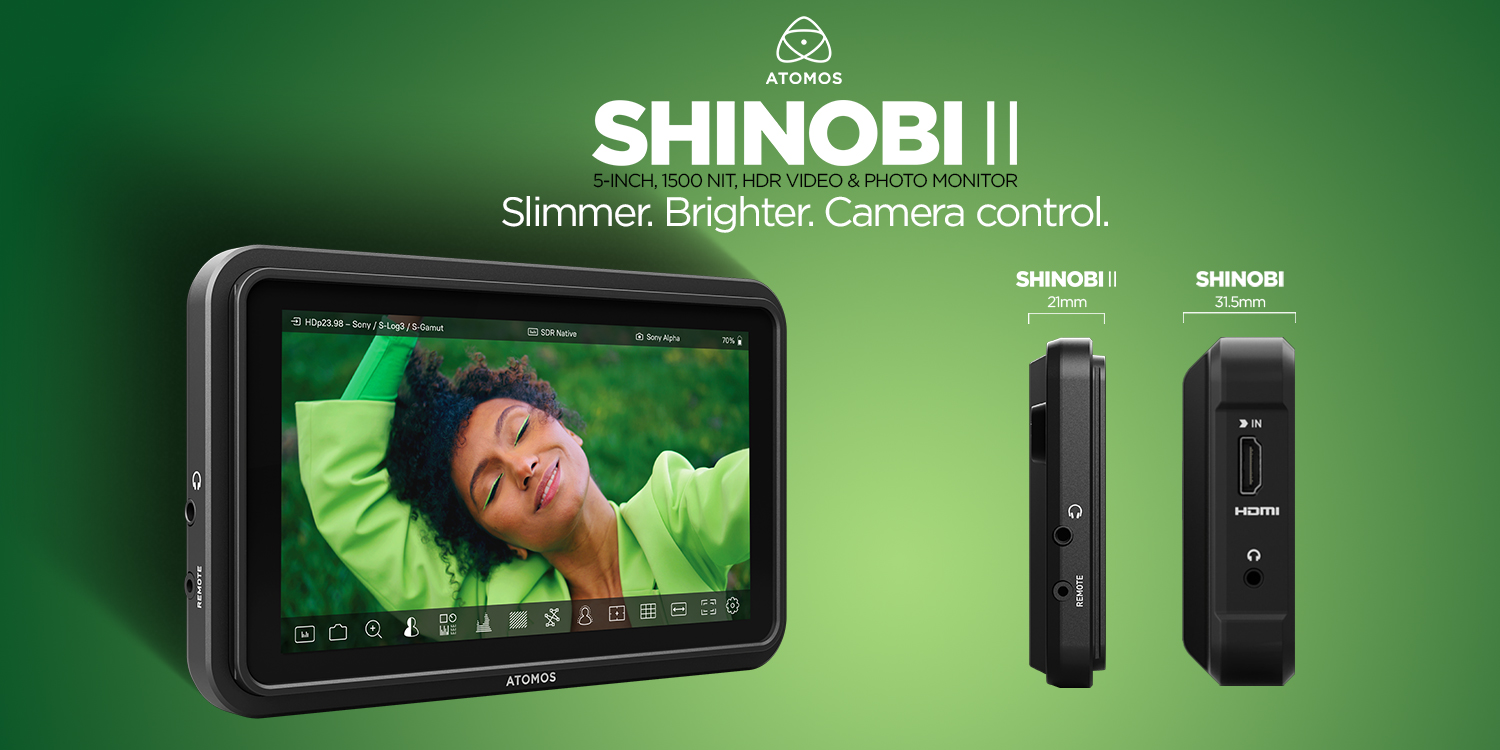If you want to take the next step in your film or photography experience, an external monitor is not an accessory, but a game changer. Whether you're shooting an ambitious video or taking the perfect portrait, the camera display is often unreliable at crucial moments. The solution? An external monitor that not only ensures a better view, but also offers many tools to take your creative work to the next level.
Why an external monitor is essential
1. Larger screen and better visibility
Camera displays are small, often too small. Especially when it comes to the finer details of your shot - precise alignment, perfect focus or the right exposure - you easily reach their limits. External monitors not only offer more room to display your image in all its glory, they are also much easier to view in bright surroundings. If you've ever filmed outside in bright sunlight, you'll know the pain of barely recognizing your image. This is where a high-brightness monitor comes into play, guaranteeing you a clear view in all conditions.
2. Higher resolution and more precise image control
Most built-in camera displays are not exactly top class in terms of resolution. An external monitor, on the other hand, delivers significantly better image quality, often in Full HD or higher, so that every last detail is sharp and precise. This not only helps with focusing, but also with detecting errors in the image at an early stage - without losing hours in post-production.
3. Technical features for the pros
External monitors are not just larger screens. They have professional tools that make work much easier. Histograms, vectorscopes, focus peaking, zebra, false color and waveform - these are all features that help to detect and correct technical inconsistencies in real time. You can see at a glance whether the exposure is correct, where the focus is and whether the colors are right. This can save a lot of time and nerves, especially for more complex shoots or in situations where every frame has to be right on the first attempt.
4. Flexibility and ergonomic benefits
Another aspect that is often missed: You can use an external monitor in almost any position without having to bend. Especially when shooting with a gimbal or in complicated setups, you don't have to stare at the camera display from an uncomfortable angle. The monitor can be mounted in almost any position to ensure a good view throughout.
5. Keeping track of everything
Another huge benefit of an external monitor is the extended field of view. In comparison to filming through the viewfinder, a monitor not only shows the frame, but also the surroundings. This enables the camera operator to recognize at an early stage whether someone is walking into the frame or another interesting thing is happening outside the current frame that should be taken into consideration. This additional control makes it possible to react more quickly to unforeseen situations and adjust the image composition dynamically.
The Atomos Shinobi II: Your new best friend on set

Let's talk about one of the best external monitors on the market: the Atomos Shinobi II. This monitor has everything you need and is light and handy enough to be carried anywhere. The Shinobi II offers an impressive brightness of 1500 Nit and that is literally a highlight. Even in direct sunlight, you can stay in the picture without having to constantly worry about the questionable readability of a camera display.
But there's much more to it - by far. The Shinobi II scores with a full HD resolution on a 5-inch display that delivers razor-sharp and extremely color-accurate images. Meaning you can immediately see whether the focus is right, the colors are accurate and the exposure is on point. Thanks to HDR support, even complex lighting conditions can be precisely controlled.
Monitoring tools that make things easier
What truly defines the Shinobi II are its professional monitoring tools. Focus peaking, zebra, false color and even 3D LUT support - all available at the push of a button. Whether you're looking for the perfect skin tones or want to make sure the highlights aren't blown out, the Shinobi II provides all the information you need to deliver precisely.
Camera control: more than simply a monitor
And here's the highlight: the Shinobi II is not just a monitor, but also offers intuitive camera control for most mirrorless camera models from Canon, Fujifilm, Nikon, Panasonic and Sony. This means you can make basic settings directly via the monitor. Some camera models even allow you to control the focus via the touch display, which greatly increases flexibility during shooting and gives you full control. This is a huge advantage, especially in fast-paced moments when everything has to happen quickly.
Compact, lightweight and robust
One might assume that so much technology would certainly weigh a lot and be unwieldy. Wrong! The Atomos Shinobi II is surprisingly light and even 30% slimmer than its predecessor, making it ideal for the use on gimbals or even in handheld shoots. At the same time, it is robust enough to withstand the harsher conditions on set. So there's no need to worry about it breaking down on an outdoor shoot.
Verdict: External monitors - a must for ambitious filmmakers and photographers
Whether you're working on a movie project or shooting the perfect picture, an external monitor is a real asset. With better visibility, higher image quality and built-in pro tools, it gives you the control you need to realize your creative vision. The Atomos Shinobi II takes this one step further, combining all these benefits with camera control and an ultra-bright display - making it the ideal companion for anyone who wants to work professionally.
So, no need to hesitate! If you want to play it safe on your next video or photo shoot, get the right monitor and your work will not only be faster and easier, but also so much better!
External monitor or camera display?